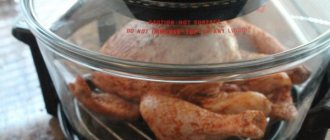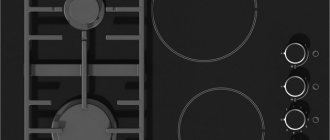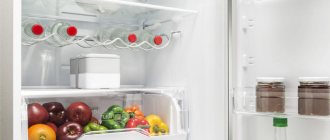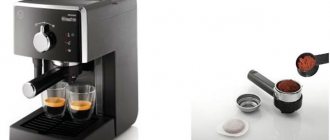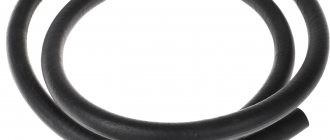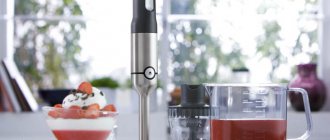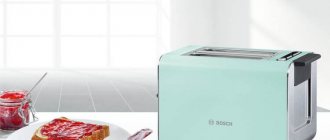What are thermoses?
When choosing a thermos, you should start with the purpose for which you are buying this household utensil. Depending on their purpose, thermoses are:
- for drinks - in this case, the options are presented in the form of a tall vessel with a narrow neck or in the form of a mug; the first option is more practical for traveling and long trips;
- for food it is a cylinder, but lower than a standard thermos. There are also options in the form of boxes, mini-pots, and tanks.
When choosing a thermos, be sure to think about what exactly you plan to transport in it, since the volume of the dish and its purpose depend on this.
Types of thermoses
The design of any device of this type has a flask with double walls. The shape varies depending on the purpose of the dish. Most of the options are similar, but there are still variations. There are thermoses for tea, coffee, and separate models for food: soups or cereals. There are options made of plastic or a combination of these materials; steel models are considered more reliable.
Universal models
The correct universal model has a wide neck and a universal-type lid. To get food you need to unscrew the lid, for a drink you just need to open the cap. This option is often presented in excellent volume and also maintains the temperature for a long time. There are lids made of glass or metal.
Our service center offers its services for repairing household appliances at a competitive price. We repair any breakdowns of modern household appliances. Leave a request and get a 15% discount - Leave a request
Bullet
Cylindrical shape that resembles a bullet. Advantages: compact size, ideal for carrying in a bag or backpack. Many companies that produce travel accessories specialize in the production of this type of thermos.
Pneumatic pump
A wide vessel, which is equipped with a large lid with a pump, is an element whose hose reaches to the very bottom. A distinctive feature of this device is that you do not need to remove the lid to pour the drink. If you want to choose a practical, yet roomy thermos, pay attention to this option. It retains heat for a long time and is easy to use.
Sudkovy
In this case, there are no models with a wide neck, since this is a design that can accommodate up to 3 plastic containers. This option is optimal if you need to store a multi-course meal in one place.
Thermal mugs and thermal bottles
The optimal solution for sports fans or frequent travelers, since you can drink on the go, just press the button located on the body.
Thermoses: characteristics, types, types
The type of main lid provided in a thermos. The main lid in this case is a device that directly covers the working volume of the vessel; an additional cap can be installed on top of it, which often also plays the role of a cup. In modern thermoses there are the following types of main lids: screw-on (screw), valve, lid, hinged lid, drinking lid, pump (pump), stopper. Here are the features of each of them. - Screws on (screw). Solid (without holes) screw-on lid, secured with a thread. Such lids are very simple and at the same time reliable, but you cannot drink or drain the contents through the classic screw - it has to be removed completely. There is also a more advanced design that allows you to drain the contents without removing the screw - just partially unscrew it; however, this is a rather specific option that is not used often. Be that as it may, twists are found mainly among classic and food thermoses (see “Type”), for which the mentioned nuances are not decisive.
- Valve. A lid (most often threaded) equipped with a valve through which the liquid contents of the thermos can freely flow. Such lids are more complex and more expensive than “blind” screws (see above), but to access the contents you don’t need to unscrew the screw every time, just open the valve. This not only provides additional convenience, but also reduces heat loss. Thanks to these advantages, valves are extremely popular in classic thermos flasks; they are also often used in thermal mugs (see “Type”). The disadvantages of this option include the fact that the valve opening is usually made quite narrow and is easily clogged with impurities (for example, tea leaves or coffee grounds). Therefore, the valve can only be used for liquids without such impurities (this also applies to food thermoses, which can also be equipped with valves).
- Lid. Lids in this case are devices that do not have threads (unlike the screws described above) and are held in place solely by friction or a latch. The design of the lids can be different: some cover the neck from the outside, others are pressed inward when closing; There are also more specific options. In any case, the lids are easy to remove and put back on, but they are not very reliable - for example, it is not recommended to turn such vessels over. Therefore, this option is found mainly in thermal mugs and thermoses for food (see “Type”), for which the mentioned disadvantages are not critical.
— Hinged lid. A variation of the covers described above, which, when opened, is not removed entirely, but is folded to the side on a special mount. Thanks to this, the likelihood of loss is reduced: in fact, you can only lose the lid along with the thermos itself; and a latch, spring, or other similar device is usually provided to hold the lid in the open position. On the other hand, fastening somewhat affects the price and dimensions of the vessel. This drawback is least critical for flasks and mugs (see “Type”), and it is among these types that hinged lids are most often found.
— Cover-drinker. Lid (regular or threaded), complemented by a special hole for drinking. This design allows you to drink from the vessel without removing the lid; and during “non-working” hours the hole is covered with a flap or other similar device. Drinking lids are extremely popular in thermal mugs and auto mugs (see “Type”): they allow you to drink from the mug comfortably while at the same time minimizing heat loss and the likelihood of spilling the contents.
— Pump (pump). Lid (classic or threaded) with built-in pump. Most often, this pump is activated by a special button: when you press this button, a portion of liquid comes out of the spout, and the thermos does not need to be tilted. However, such devices are quite complex and cumbersome, so it makes sense to use them only in thermos jugs (see “Type”): the size and weight of the pump is small compared to the dimensions of the jug itself, and tilting such a thermos can be difficult - it’s easier to use a pump.
- Cork. A classic stopper that fits tightly into the neck of a thermos and is held in it without threads or other similar devices. Corks differ from the lids described above in their greater thickness, and also in that they are inserted into the neck from the inside (while the lid can cover the vessel from the outside). Plugs are very easy to use, but have low reliability, which decreases even more as they wear out. As a result, this option has practically fallen out of use.
How to choose the right quality thermos
Which thermos to choose - stainless steel or plastic, what volume, what are the features of a particular model and other questions arise in the process of choosing this kitchen device. Next, we will look at the key criteria that you should pay attention to when choosing a product.
By volume
To choose a quality thermos, you first need to decide how much volume you need. The smallest option is 250 ml; there are models with a volume of up to 40 liters.
- 200 ml to 1 liter are small models;
- 1–2 liters - universal, standard options;
- from 3 liters - these are large-capacity.
About 1 liter can be used for 1-2 people. If you are planning a hike with your family or company, then it is better to buy models from 2 liters.
According to the materials of the flask and body
Most often, stainless steel and plastic are used for the body. But metal is better, it is stronger and more durable, and also more resistant to external influences. Plastic is the best option for a food thermos that you plan to take to work. In this case, the likelihood of external influence on the container is reduced.
Flask material:
- plastic is rarely used, advantages are affordable price and light weight, disadvantages are low heat conductivity;
- glass - easy to clean and hygienic, the bulb is replaced if a crack appears;
- steel is the optimal solution for those who buy a container for an active lifestyle.
Ability to retain heat
There are no standards regarding this indicator, so heat retention data varies depending on the manufacturer and model. According to user reviews, among domestic manufacturers, the best products are those from the Arctic company.
Please note that the heat retention rate is influenced by what technologies are used by the manufacturer, as well as the quality of the materials used. The duration of temperature retention is affected by:
- neck diameter, the narrower the better;
- type of cover, options with a button are inferior to models with threads;
- The material of the flask, when the lid is closed, glass keeps heat for up to 12 hours, metal - about 6-8 hours.
For odor insulation
The company’s description does not indicate this point, but it is very important for the comfortable operation of the kitchen device. Here you need to understand that steel models are able to absorb and retain odors. So it is better not to store milk and other dairy products, sour juices and drinks with a very strong aroma. Glass options are considered the optimal solution for isolating odors, since such models do not absorb aromas at all, but the key disadvantage is the fragility of the flask.
By shape and design
The shape depends on the purpose of the dish. Mugs or higher models are more intended for drinks, deep, cylindrical, but low options are for transporting food. Regarding design: here manufacturers offer different colors and shapes. There are options with handles, which increases comfort during operation. There are rubberized inserts that reduce slipping; such models are easier to hold in your hand.
Cork
Since the lid determines how much heat will be lost, special attention must be paid to this detail.
- The lid is the most popular method and is used in conjunction with an additional stopper. In models with an additional stopper, the lid is an alternative to a cup.
- Pump plugs often include a special valve for supplying fluid and an air pump. They are large in size, but retain heat for a long time.
- Plugs with a valve are considered more practical to use. And to pour a drink, you don’t need to unscrew the lid. When you press the button, tea or coffee comes out, thereby reducing heat loss.
- A cork with a tongue is used by manufacturers in sports versions and thermal mugs.
Which thermos should you choose - glass or metal? It all depends on the purpose of the vessel, the goals set for it and personal preferences.
Additional functions
In this case, we are talking about more modern, advanced models, in which there is a special sieve on the flask for brewing, or there is a valve for releasing steam, which is often found in options for first and second courses. You will have to pay extra for additional features; accordingly, the price of such goods increases.
How to choose the right one
Before choosing a thermos, inspect it carefully. The item must be clean, without scratches or dents, and free of foreign odors. Pay attention to the material of manufacture, volume and lid of the item. It is most convenient to use a thermos with a metal body and a lid with a valve. A children's thermos may also have a plastic body. This item is lighter in weight and is convenient to take to school or for a walk.
If possible, test the thermos you buy. When filled with hot water, a high-quality product does not change its temperature; its body remains cold. If the body heats up, it means that the thermos quickly releases heat and the drinks in it will cool down earlier than expected.
If you are purchasing a thermos for hunting, fishing or long hikes, then you should opt for a product with a volume of 1-1.5 liters. Stainless steel is better suited as a material for the body, since a fall may occur when moving, and a metal body will protect the flask from damage and prevent the drink from spilling.
If you are purchasing a thermos for hunting, fishing or long hikes, then you should opt for a product with a volume of 1-1.5 liters.
Rating of the best thermoses
To understand which thermos to choose, it is not enough to study the criteria for choosing a given dish. It is necessary to become familiar with existing manufacturers and types of products. Next, we will look at the most popular models from different brands.
Thermo FBB-1000 (1 l)s
The optimum ratio of price and quality. This is a lightweight version from the company that guarantees heat maintenance throughout the day. The valve is used for pouring, there are 2 buttons.
Pros:
- dimensions;
- practicality;
- price;
- quality.
Disadvantages - a wet plug is difficult to unscrew.
Biostal NB-1000 (1 l)
If you chose this option, you are right; the set includes 2 plastic covers. The device is convenient to use, seals tightly due to large threads and a silicone ring. A cover is provided that makes storing the vessel easier.
Advantages:
- wide throat;
- coating with anti-slip effect;
- tightness;
- heat retention up to 19 hours.
There is only one drawback - it is very thin steel.
Penguin VK-46
This model does not allow transporting food, but you can easily pour tea or coffee for 1-2 people. A distinctive feature is the use of metal and plastic, making the thermos comfortable to hold in your hand. The vessel is very airtight, so you can take it with you on hikes.
Pros:
- retaining heat for up to a day;
- ergonomic shape;
- affordable price;
- design.
The disadvantage is that the manufacturer only supplies the model with a blind plug.
Arctic 106-900 (0.9 l)
A high-quality option made of steel. Most residents of the Russian Federation prefer this particular model because of its excellent quality, volume and durability. The lid allows you to pour up to 200 ml of drink.
Advantages:
- volume;
- easy to use;
- retaining heat for up to a day.
The downside is that it's difficult to twist.
Stanley Adventure SS Vacuum Bottle (1 L)
Stainless steel model. The manufacturer offers customers several design solutions. It has good vacuum thermal insulation, due to this it maintains the temperature of drinks for a long time, about 24 hours. The small diameter of the neck allows you to pour and pour drinks without problems.
Advantages:
- no pungent odor;
- long-term heat retention;
- compact sizes.
Users did not find any cons.
Xiaomi Viomi Stainless Vacuum Cup
This option is considered the optimal solution for those who are looking for a compact thermos with a metal flask. In this case, the manufacturer uses a special technology that creates a structure of eight layers, which ensures long-term temperature maintenance. Feature: waterproof. The model perfectly retains both heat and cold, regardless of the conditions. The antibacterial coating used by the company reduces the likelihood of bacteria getting inside the vessel.
Advantages:
- design;
- presence of silicone lining;
- heat retention for up to 24 hours, cold storage for up to 12 hours.
The downside is the small volume.
Thermos SK-2010 (1.2 l)
One of the best companies that offers spacious, convenient vessels of various sizes and design solutions. Here you get thermal insulation for up to 24 hours. This model uses a spill valve, which is equipped with 2 keys. The cork ensures long-term heat retention. Due to its small size, the vessel can be taken to the gym, to work or for a walk.
Pros:
- dimensions;
- price;
- quality;
- You can say mixture for children.
The downside is that it is very difficult to unscrew a wet plug.
| Model | Volume | Material |
| Thermo FBB-1000 | 1 liter | Steel |
| Biostal NB-1000 | 1 liter | Steel |
| Penguin VK-46 | 1 liter | Metal+plastic |
| Arctic 106-900 | 0.9 liters | Steel |
| Stanley Adventure SS Vacuum Bottle | 1 liter | Steel |
| Thermos SK-2010 | 1.2 liters | Steel |
Types of thermoses
To know which tea thermos is best to choose, you need to understand how to choose this item. You will need to familiarize yourself with the basic characteristics of household cookware (material, volume, additional functions), and also take a closer look at the manufacturer.
When choosing, you will need to familiarize yourself with the main characteristics of household cookware, as well as take a closer look at the manufacturer.
From various materials
The thermos body is made from two types of materials: plastic and stainless steel. The plastic case is lighter in weight and is convenient to carry, but plastic gives off heat faster and also cracks at the slightest mechanical damage. A plastic tea thermos will be convenient to take with you on a walk, study or work, but this material is not suitable for long hikes, hunting or fishing.
A thermos for tea made of plastic will be convenient to take with you for a walk, study or work.
The metal body retains the temperature of the drink longer compared to plastic counterparts. The case is made from a special alloy that is not afraid of corrosion, mechanical damage or shock.
The case is made from a special alloy that is not afraid of corrosion, mechanical damage or shock.
The special flask, which is located inside the thermos, is made of glass, plastic or metal.
- Metal. A metal flask quickly loses heat, but is very durable. Such a flask will not break if the thermos suddenly falls.
A metal flask quickly loses heat, but is very durable. - Glass. A glass flask perfectly retains the initial temperature of the liquid, but is fragile. The material is chemically inert, which means it will not react with the components of the liquid; tea or other drink will not acquire any foreign taste or odor.
A glass flask perfectly retains the initial temperature of the liquid, but is fragile. - Plastic. A plastic vessel retains heat for a long time, but is not absolutely safe for human health. When such a vessel is filled with high-temperature liquid, the plastic begins to release polymer substances that have a detrimental effect on our body. It is also not recommended to store drinks or food in plastic containers for a long time.
A plastic vessel retains heat for a long time, but is not absolutely safe for human health.
A flask with mirror glass retains heat almost 3 times longer than its counterparts, due to the fact that such material has less thermal radiation.
By volume and shape
The volume and shape of the thermos depend on your requirements and the situations in which you intend to use this item. So, for long hikes, fishing and hunting, family walks, a product with a volume of at least 1 liter is suitable. If you want to take a hot drink to work, then a container with a capacity of up to 500 ml will be sufficient.
For long hikes, fishing and hunting, family walks, a product with a volume of at least 1 liter is suitable.
The thermos is most often shaped like a regular cylinder. But children's thermoses can have an unusual shape and bright design.
Children's thermoses can have an unusual shape and bright design.
By functions and capabilities
The functionality of the product also depends on the type of cover. Approximately 1/3 of the heat of the drink escapes through the lid of the item, so you should definitely take this into account when choosing.
- Plastic cover. It has a high tightness, allowing the drink not to spill even if the dishes fall.
The plastic lid is highly airtight and prevents the drink from spilling even if the glassware falls. - Plug lid. This cork is made of wood. It wears out quickly, and over time the fluid begins to leak. In modern thermoses, a plug cap is rarely used.
The wooden lid wears out quickly and over time the liquid begins to leak. - Cover with valve. It is the most convenient to use. You will not need to constantly open and close the lid, just press the button. Due to the lack of contact with the environment, the liquid maintains its temperature longer.
Due to the lack of contact with the environment, the liquid maintains its temperature longer.
Additional functions of the thermos include:
- Electric heating This product is equipped with a cord with a plug for the cigarette lighter socket. You can heat a thermos in your car or room, thereby keeping your tea or coffee hot.
You can heat a thermos in your car or room, thereby keeping your tea or coffee hot. - French press. A product with a French press function allows you to brew a drink directly in a thermos.
A product with a French press function allows you to brew a drink directly in a thermos. - Tube. Some thermoses also have a straw to make it convenient to drink on the go. This option will be ideal for cool drinks in hot weather.
Some thermoses also have a straw to make it convenient to drink on the go.
What you shouldn't buy
- Products from unknown brands. There is a risk that the company uses low-quality materials or violates production technology, thereby increasing the danger to your health.
- When there is a strong odor from the product or after removing the lid.
Be sure to read user reviews regarding this or that option. Users always point out the pros and cons of kitchen devices, this will allow them to get an objective assessment.
Which thermos to choose for food
Ordinary buyers are a little lost when choosing a thermos for storing food. There are several types of food thermoses.
- Models that can accommodate several food containers of various capacities. At lunchtime, a person can immediately take out several containers with different ready-made and already hot dishes. If necessary, they can be placed in the microwave.
- Classic model. If the consumer uses only one type of dish, then it is best to choose a universal model with a wide neck.
When choosing food thermoses, the volume of the internal container is taken into account. For a schoolchild, a model with a small volume - no more than one liter - is quite suitable. An adult should choose a thermos with a larger volume.
When purchasing, be sure to evaluate the accessories sold in the kit. Sometimes having a convenient bag or cutlery can make the difference in your choice.
Carefully examine the model you are purchasing for internal odors. If there is some kind of smell, then you should not choose such a thermos.
How to use and care for a tea thermos
The service life depends on the correct use of the thermos. Rules for caring for the device if you plan to pour tea, coffee and other drinks:
- timely washing;
- ventilation;
- thorough cleaning so that no tea leaves or coffee grounds remain inside.
Also make sure that the dishes do not fall on the floor and there are no strong impacts. Check the instructions to see if they are dishwasher safe. Carbonated drinks should not be poured into metal containers, as they accelerate the destruction of the material.
How to choose the right thermos for tea?
The thermos into which tea, coffee or other drinks are poured usually has a narrow neck closed with a stopper. In modern models, the cork has a valve through which you can easily pour the drink into the mug.
This design ensures that the drink is kept hot for a long time, since the lid is the main source of heat release.
Taking up little space, compact and easy to use, the tea device has won the hearts of sports and outdoor enthusiasts.
Among thermoses for drinks, there is another type - pump type. From this product, drinks are poured into a mug through a pump built into the lid. The contents of the container remain hot for a long time, and the risk of spilling tea or coffee from a pump thermos is reduced to zero.
The only drawback is the rather large volume (at least 3 liters). But it will help out a large family going outdoors or on a trip.
A thermal mug is a kind of mini-thermos designed for drinks. Such a product does not maintain heat for a long time; it cannot be carried in a bag or backpack.
However, thermal mugs are held in high esteem by fishermen (especially in the cold season) and office workers (when it is not always possible to drink hot coffee).
The quality of a thermos is confirmed by the time during which the drink remains hot. Typically, a standard good quality unit will keep water at 65-70 degrees for 24 hours.
When choosing a thermos for drinks, preference should be given to a product with a glass flask, a stopper made of natural materials and a lid equipped with a wide rubber seal.
